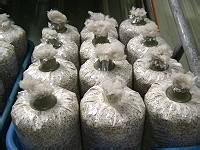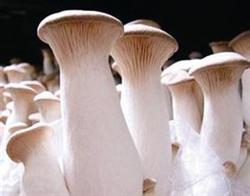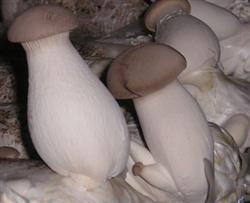Anti-fouling technology of bag cultivation of Pleurotus eryngii

Pleurotus eryngii, Pleurotus nebrodensis and Hypsizygus marmoreus are edible fungi with high benefit. Many counties and cities in China have been listed as leading industries. At present, it is mainly cultivated by (high temperature sterilization) clinker method. Because of the complicated technology, most growers lack production experience and cultivate extensively, which seriously pollute miscellaneous bacteria, affect the cultivation benefit and production enthusiasm, and also bring difficulties to cultivation and technology popularization. In practical cultivation, pleurotus eryngii, pleurotus nebrodensis, hypsizygus marmoreus and other middle and high-grade mushrooms are easy to be polluted, low yield and yield due to weak mycelium decomposition, poor adaptability and pollution resistance, slow mycelium growth, etc. The second reason is that the clinker culture medium is sterilized and ripened, the production links are many, the cultivation technology level is low, the condition is simple, the inoculation disinfection is not strict, and the use of contaminated raw materials and strains is easy to be polluted by harmful miscellaneous bacteria. in ord to effectively solve that contamination of miscellaneous bacteria, a pollution-free biochemical special antifouling agent for edible fungi and a mushroom bag cultivation antifouling and yield increase agent are applied, 0. 4 - 0. 5% of the pollution-free biochemical special antifouling agent is dissolve in mixing water, mixed and bagged, and half of the time of clinker sterilization is carry out at 100 DEG C, so that the culture medium can kill harmful miscellaneous bacteria and eggs in a short sterilization process, soften the culture medium, achieve the same effect as clinker sterilization, and mycelium can also grow well. By using this technology, the yield can reach 98%, the pollution can be reduced by more than 20%, and the cost of sterilization labor and energy consumption can be saved by about half. After large-scale and annual application and popularization by users all over the country, it has been welcomed and trusted by more and more mushroom farmers with high cultivation success rate, high yield and good quality and benefit, and has achieved remarkable social and economic benefits. The main technical points are as follows: 1. Preparation of culture medium: The culture medium can adopt the formula of conventional sawdust, bran, cottonseed hull, corncob, crop orange stalk and the like (one raw material can be used, or several raw materials and auxiliary materials can be mixed into the culture medium). Taking the formula of conventional sawdust bran culture medium as an example, the preparation method of culture medium is introduced as follows: sawdust 78%, bran 20%, gypsum 1%, sugar 1%, special anti-fouling agent or anti-fouling agent for mushroom bag cultivation 0. 4 - 0. 5%(optional one, hereinafter referred to as anti-fouling agent), oxygen-increasing agent or lime powder 0. 2 - 0. 3% and water 120-130 jin. Calculate all components according to the proportion of the culture medium formula, weigh the culture medium, fully mix sawdust, bran and gypsum insoluble in water, put sugar, antifouling agent and oxygenator insoluble in water into mixed water, fully dissolve and mix into evenly mixed dry culture medium, repeatedly stir to make the antifouling agent aqueous solution fully penetrate into the culture medium to achieve uniformity, bag, and then close the bag mouth to sterilize. Second, bagging, sterilization: loading should be selected more than 0.04 mm toughness, thin uniform thickness, not easy to crack, no leakage of high-quality polypropylene or polyethylene plastic bags (simple). When seed production, the material should be packed properly, and when cultivation, the material should be packed tightly, packed to about 6~10 cm from the bag mouth, and the bag mouth should be tightened with plastic tie rope or sealed according to conventional methods. Generally, the temperature is maintained at 100℃ for 4~8 hours (4~5 hours for small bags and 6~8 hours for large bags). If the plastic bag is larger and more loaded, the sterilization time can be extended by 2~4 hours. After sterilization, take out the culture bag and put it into a clean or disinfected cooling room, or inoculate it after cooling in the inoculation room. III. Inoculation and culture: 24 hours before inoculation, the inoculation room that has not been used for a long time and the seed production and cultivation place with serious environmental pollution shall be disinfected by spraying 1.5%-2% special anti-fouling agent dissolved in water. The inoculation room can also be disinfected by conventional method or ignited with high-quality aerosol disinfectant at the dosage of 4 g per cubic meter space. In order to effectively prevent contamination of the inoculation room due to incomplete disinfection, the inoculation room can be inoculated 30 minutes before inoculation after closed disinfection. Inoculation should select strong adaptability and resistance, mushroom and rapid tide, short growth cycle, high yield and quality, pollution-free robust strains. During inoculation, plastic bags can be used for inoculation at one end, plastic cylinders can be used for inoculation at two ends or perforated, etc. During inoculation, the strains should be dug into blocks, and the inoculation amount should be appropriately increased to promote the rapid growth of hyphae, shorten the period of fungus, and improve the yield and quality of cultivation. After inoculation, move to the culture room for culture. Fourth, culture: should choose insulation, ventilation, cooling and other conditions better indoor culture room. After treatment with insect repellent and disinfectant before use, the inoculated culture bag is moved to a vertical or horizontal indoor culture rack for cultivation in the dark, and the temperature is maintained at about 20~25℃. Culture for about 10 days should be turned over the bag to check for survival and contamination. If there is any culture bag contaminated due to poor disinfection or bacteria, it should be picked out of the culture room, put on a new bag or seal the inoculation hole, and then sterilize and disinfect it, and re-inoculate the bacteria for culture. During cultivation, heat preservation, cooling, bag inversion, disinfection and insect prevention should be done well. When the bag is full of hyphae and cultured for a period of time, the mycelium shrinks slightly and becomes compact, it can be used as a strain or for fruiting management. Because Pleurotus eryngii, Pleurotus nebrodensis and other varieties have different requirements on temperature, humidity, ventilation, etc., cultivation should be carried out according to the growth conditions required by cultivated varieties, with reference to conventional methods, and will not be introduced here. The technology is suitable for seed production and cultivation bag of original seed, mother seed production and original seed production, and seed production and cultivation application of various edible fungi such as pleurotus ostreatus and coprinus comatus. Annual production can be formed if suitable natural temperature and artificial regulation measures are fully and reasonably utilized, and varieties of high, medium and low temperature are matched or alternately cultivated. In production, as long as the ratio of material to water is well controlled, the materials are fully mixed, high-quality plastic bags are selected, the concentration of antifouling agent is kept uniform according to the dosage, disinfection prevention and other key links are well done, and generally no pollution occurs, and the finished product rate can reach 100%. 5. Notes: 1. Fast-growing, high-quality, high-yield and pollution-free strains that grow well on semi-clinker should be selected. 2, semi-clinker seed production culture antifouling agent can not be less than 0.5%, clinker cultivation antifouling agent can not be less than 0.4%, disinfection, control of miscellaneous bacteria antifouling agent should be dissolved in the amount of 1~1.5% after use. 3, the use of this technology, should be done disinfection prevention work, prevention, to avoid unnecessary pollution. 4. If clinker is used for cultivation, the antifouling agent should be dissolved in the mixing water according to the dosage of 0.4-0.5%(such as 250 g (0.5 kg) of antifouling agent for 100 kg of dry culture material, 120 kg of mixing water, the antifouling agent should be dissolved in 120 kg of water, fully stirred and dissolved and mixed evenly into the dry culture material, the antifouling agent is increased or decreased according to the proportion of dry culture material), and the same dosage ratio must be maintained. If the water content is too little when mixing, it should be mixed into the material according to the amount of antifouling agent when mixing, and do not add water. If the particle size of the culture medium is large, the mixture should be mixed according to the amount of antifouling agent. After dissolving in water, it should be mixed 12 hours in advance to pre-wet, and then bagged after mixing evenly. 5. In cultivation, Pleurotus eryngii can be selected from large-cap or columnar mushroom species with high yield and fast growth, or bowling ball mushroom species with good quality and long growth period. In order to ensure the yield, quality and benefit, the strain should be cultivated before cultivation and then used in production to reduce unnecessary errors or losses.
- Prev

New technique of bag planting and covering soil of Pleurotus eryngii
Pleurotus eryngii, also known as Pleurotus ostreatus, is one of the rare edible fungi. Its meat is thick, crisp and tender, milky white in color, delicious in taste and rich in nutrition. It is known as "meat in vegetarian". Using the following indoor and outdoor soil covering cultivation techniques, the biological biodegradability can reach 100%, 120%, and the mushroom body is commercial and not covered with soil.
- Next

Common problem analysis of Pleurotus eryngii
Pleurotus eryngii is one of the edible fungi developed in China in recent years. Its production cycle is short, effective is fast, economic benefit is relatively high, and the planting area is expanding continuously. However, some problems often occur in the production of Pleurotus eryngii, which cause huge losses to mushroom farmers, so we must pay attention to them. I. Bacterial bag pollution caused by...
Related
- Fuxing push coffee new agricultural production and marketing class: lack of small-scale processing plants
- Jujube rice field leisure farm deep ploughing Yilan for five years to create a space for organic food and play
- Nongyu Farm-A trial of organic papaya for brave women with advanced technology
- Four points for attention in the prevention and control of diseases and insect pests of edible fungi
- How to add nutrient solution to Edible Fungi
- Is there any good way to control edible fungus mites?
- Open Inoculation Technology of Edible Fungi
- Is there any clever way to use fertilizer for edible fungus in winter?
- What agents are used to kill the pathogens of edible fungi in the mushroom shed?
- Rapid drying of Edible Fungi

